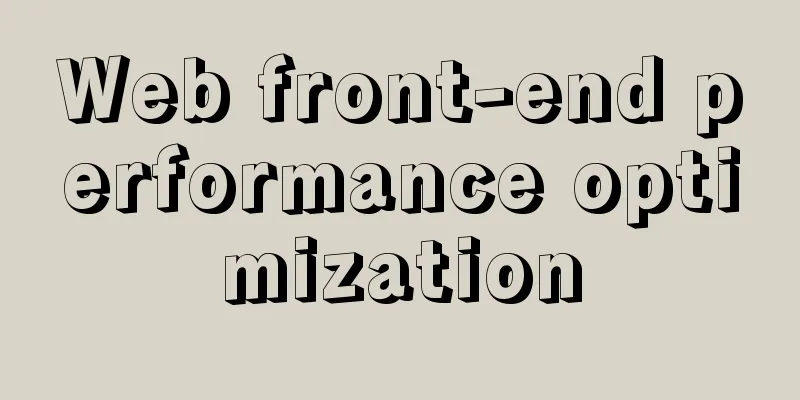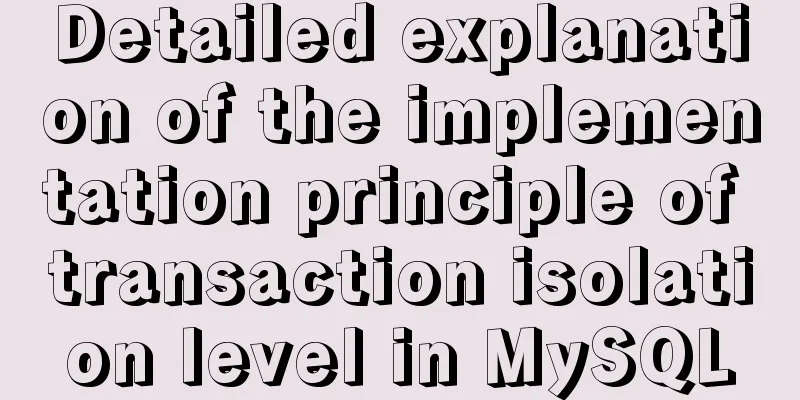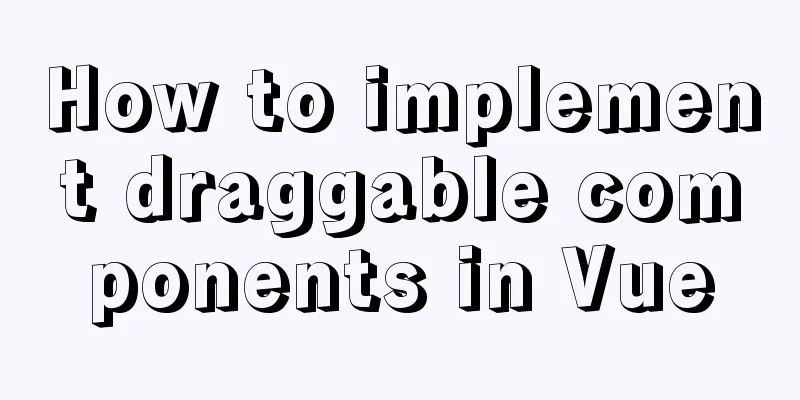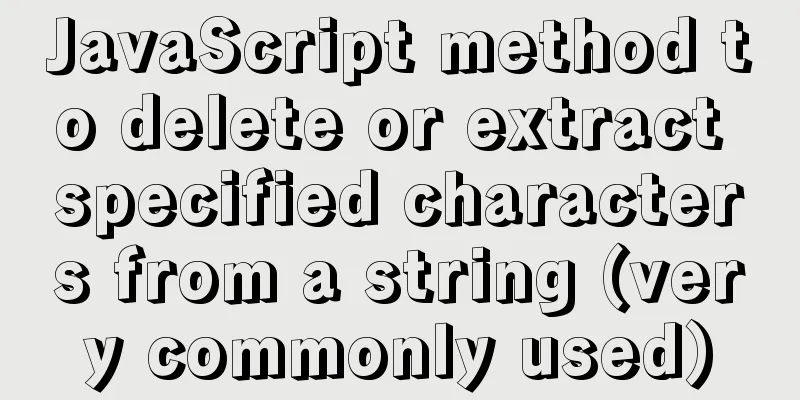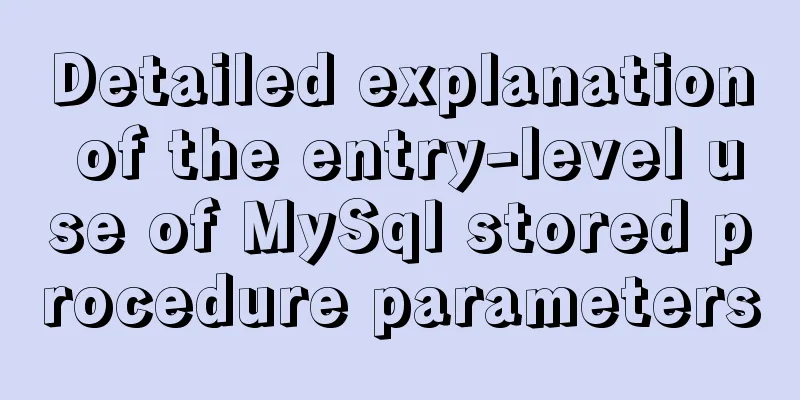Detailed explanation of execution context and call stack in JavaScript
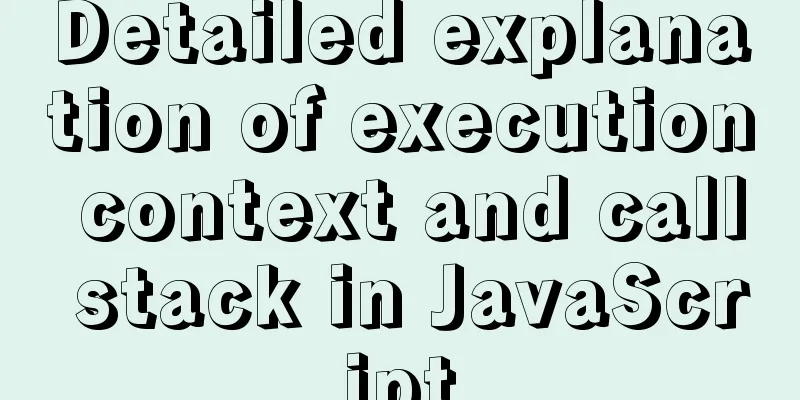
1. What is the execution contextThe code runs in a certain environment, which we call the execution environment, or execution context. According to different execution environments, we can divide them into three categories: Global execution environment: the default environment when the code is first executed Function execution environment: Whenever the execution flow enters a function body Eval execution environment: When the text inside the eval function is executed 2. What is the Execution Context Stack?Since it is a 'stack', it must conform to the characteristics of a 'stack', that is, the data structure is first-in, last-out. Let's look at a piece of code:
function cat(a){
if(a<0){
return false;
}
console.log('Push to stack:'+a);
cat(a-1);
console.log('Pop out:'+a);
}
cat(3);
// Push to stack: 3
// Push to stack: 2
// Push to stack: 1
// Push to stack: 0
// Pop stack: 0
// Pop: 1
// Pop: 2
// Pop: 3Let's analyze the execution process of the above code: ① When the browser is loaded, the program enters the global execution context and pushes it into a stack (the first one to enter, so the bottom layer); there is only one function cat under this execution context, cat call, parameter 3; ② The program enters the cat function, that is, enters the execution context of the function, and pushes it into the stack (the second one to enter, so the second to last layer). Because the parameter 3 is greater than 0, it continues to execute and outputs 'Push stack: 3'; ③The program continues to execute, calling the function cat, entering a new function execution context again, and continuing to push into the stack (the third entry, the third to last layer), with the parameter a-1, and looping step ②; here, it should be noted that because the function cat(a-1) is called, the next line of code 'Pop: a' (at this time a is still 3), that is, 'Pop: 3' is temporarily stranded and exists in the second to last layer of the stack. ④ Repeat steps ②③ and output 'Push: 2', 'Push: 1', 'Push: 0' in turn; at the same time, the outputs that are stranded are 'Pop: 2' (the third layer from the bottom of the stack), 'Pop: 1 (the fourth layer from the bottom of the stack)', and 'Pop: 0 (the fifth layer from the bottom of the stack)'; ⑤ According to the characteristics of the stack, the four output items that are stranded are output in order: 'Push to stack: 3', 'Push to stack: 2', 'Push to stack: 1', 'Push to stack: 0';
3. Details of the execution context stack process We already know that each time a function is called, a new context is executed. Each execution context is divided into two phases: creation phase and execution phase. Creation phase: refers to the phase when the program calls a function but the code is not executed; 1. Creation phase When the function is called at this stage, an execution context object (executionContextObj) is created, which contains three objects: scope chain object (scopeChain), variable object (variableObject, referred to as VO), and this object. VO includes variable declaration (variable), function declaration (function), parameters (arguments), etc. Step 2: Create parameters, functions, and variables Step 3: Determine the value of the context's 'this' Let's further analyze the above steps with the code:
function cat(name) {
var a = 'Year after year';
var b = function () {};
this.name = name;
function c() {
console.log(this.name);
}
c();
}
cat('There is fish');When this code calls the function cat('有鱼'), the execution context is in the creation phase, and the code is parsed as follows:
cat execution context object = {
scopeChain: { ... }, // 1. Create a scope chain and allocate stack memory variableObject: { 2. Create variable object arguments: { // 2.1 Parse parameter 0: 'There is fish',
length: 1
},
name: '有鱼', // 2.1 Parse parameters, create parameter names, and assign parameters c: function c() // 2.2 Find function declaration c, and use c as an attribute and function c as a value a: undefined, // 2.3 Find variable declaration a, initialize it to undefined, only look at the declaration part at this stage, and do not assign a value b: undefined // 2.3 Find variable declaration b, initialize it to undefined, only look at the declaration part at this stage, and do not assign a value },
this: { 3. Create this object this:cat('有鱼') // 3.1 Points to the object of this call name:undefined // 3.2 The object property name is initialized to undefined
};
c() //Enter the execution context of function c again, same as cat function, not expanded yet}Through code analysis we can draw the following conclusions ① The order of the three steps cannot be messed up ② In the VO step, execute the function declaration first, then execute the variable declaration ③ Only parameters can be assigned at this stage, variables and functions can only be declared
2. Implementation In this stage, the js interpreter executes the function code in the context, runs the js code line by line, and assigns values to variables;
cat execution context object = {
scopeChain: { ... },
variableObject: {
arguments: {
0: 'There are fish',
length: 1
},
name: 'There is fish',
c: function c(),
a: '年年', // variable a is assigned a value b: function b // variable b is assigned a value },
this: { 3. Create this object this:cat('There is fish')
name:'有鱼' // Assign a value to the object attribute name}
}The above is a detailed explanation of the execution context and call stack in JavaScript. For more information about the execution context and call stack in JavaScript, please pay attention to other related articles on 123WORDPRESS.COM! You may also be interested in:
|
<<: How to use Docker Compose to implement nginx load balancing
>>: mysql query data for today, this week, this month, and last month
Recommend
Two solutions to the problem of MySQL in conditional statement only reading one piece of information
Today, my colleague encountered a very strange pr...
The difference between mysql outer join and inner join query
The syntax for an outer join is as follows: SELEC...
WeChat applet date and time component (year, month, day, hour, and minute)
This article example shares the specific code of ...
How to implement on-demand import and global import in element-plus
Table of contents Import on demand: Global Import...
How to use type enhancement without typingscript
Preface Due to the weak typing of JS, loose writi...
Vue encapsulates a TodoList example and implements the application of browser local cache
This article mainly introduces the case of Vue en...
JavaScript microtasks and macrotasks explained
Preface: js is a single-threaded language, so it ...
Node.js sends emails based on STMP protocol and EWS protocol
Table of contents 1 Node.js method of sending ema...
Detailed explanation of how to use Docker to build a simple Java development and compilation environment
There are many versions of the Java language. In ...
Docker: Modifying the DOCKER_OPTS parameter in /etc/default/docker does not take effect
By default, /etc/default/docker configuration wil...
Web page color matching example analysis: Green color matching web page analysis
<br />Green is between yellow and blue (cold...
Detailed explanation of MySQL alter ignore syntax
When I was at work today, the business side asked...
Detailed explanation of docker entrypoint file
When writing a Dockerfile, include an entrypoint ...
Vue implements a simple magnifying glass effect
This article example shares the specific code of ...
How to modify mysql to allow remote connections
Regarding the issue of MySQL remote connection, w...




